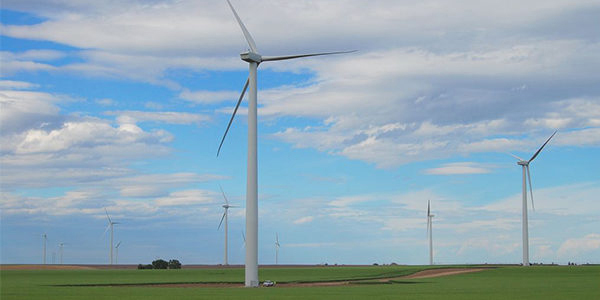
Tri-State Generation and Transmission Association has reached a settlement with more than two dozen of its members and other parties over the first phase of its 20-year, $21.3 billion plan to reduce its carbon dioxide emissions.
The Colorado-based cooperative said Wednesday that the “landmark” agreement, filed for approval with the Colorado Public Utilities Commission, sets near-term targets for greenhouse gas emission reductions before 2030 as part of its Responsible Energy Plan (20A-0528E).
 Tri-State CEO Duane Highley | SPP
Tri-State CEO Duane Highley | SPPTri-State CEO Duane Highley thanked the cooperative’s members, state officials, environmental advocates and labor representatives who worked on the settlement, which he called “a meaningful advancement in our efforts to transform our cooperative as we responsibly serve reliable and affordable power to rural communities, for our members and Colorado.”
The agreement includes “numerous and complex provisions” resolving Phase I of Tri-State’s electric resource plan (ERP) that it filed with the PUC in December 2020 as part of an ongoing proceeding.
Under the settlement’s terms, Tri-State agreed to reduce GHG emissions related to its wholesale sales in Colorado by 26% in 2025, 36% in 2026, 46% in 2027 and 80% in 2030. The amounts will be calculated based on the cooperative’s 2005 emissions baseline.
Tri-State also said it will report its progress on GHG emission reductions to the commission in its ERP annual progress reports going forward and conduct a competitive solicitation for new resources with in-service dates through 2026.
The parties, which included PUC staff, agreed to recommend the PUC approve Tri-State’s resource plan, subject to certain modifications in the settlement. They also agreed to an extensive set of modeling assumptions and inputs for the ERP’s second phase.
Tri-State expects the commission to review and consider the settlement’s approval during the first quarter this year.
Jon Goldin-Dubois, president of Western Resource Advocates, said Tri-State “has come a long way” in “committing to near-term, enforceable reductions in climate-changing greenhouse gas pollution.”
“This agreement will make significant progress in accelerating emission reductions in the West, all while reducing costs for customers and supporting communities most impacted by the transition,” he said. “We have much work to do, but Tri-State is to be commended for taking these steps to maximize near-term emission reductions, the most important action society can take to avoid the worst impacts of climate change.”
Goldin-Dubois was one of several environmental advocates and members quoted in Tri-State’s press release announcing the settlement. Those groups are among those that have previously criticized the cooperative for its reliance on coal-fired energy.
Colorado lawmakers passed legislation in 2019 requiring utilities to cut CO2 emissions by 80% from 2005 levels by 2030 and 100% by 2050.
In January 2020, Tri-State responded with its Responsible Energy Plan to shut down more than 1.1 GW of coal-fired resources, transition to a cleaner energy portfolio and ensure compliance with Colorado’s environmental regulations. (See Tri-State to Retire 2 Coal Plants, Mine.)
Tri-State said it added 304 MW of wind energy last year, and it plans to add six additional solar projects by 2024. It said renewable energy will account for 50% of its 42 members’ consumption that year and 70% by 2030.
The settlement agreement’s additional modeling will include continued analysis of the retirement date for Craig Station Unit 3, which previous modeling validated would retire by 2030.
United Power to Exit Tri-State?
While Tri-State works to clean up its fuel mix, it may also lose one of its largest members.
United Power, which accounts for about 20% of Tri-State’s business, filed with FERC in December its intention to withdraw from Tri-State, effective January 2024 (ER21-2818).
United made its termination contingent on FERC’s determination that the exit fee to leave the association is just and reasonable. Last November, the commission accepted Tri-State’s methodology for calculating membership exit fees, subject to a refund hearing set for May, and also opened an inquiry under Section 206 of the Federal Power Act. (See FERC Accepts Tri-State’s Exit Fee Calculation.)
“Tri-State will work with United Power, as it would with any other member, through the contract termination process to support an orderly withdrawal,” Highley said in a statement. “The contract termination tariff approved by the FERC ensures that any utility member’s withdrawal does not harm the remaining members of our cooperative or Tri-State.”
Tri-State’s Kit Carson Windpower facility | Tri-State
United has said its exit fee should be between $200 million and $300 million. Tri-State has set the amount at $1.5 billion.
Two of Tri-State’s members have already paid the exit fee and left the association. As many as eight other members have asked the co-op what it would cost them to exit their contracts.
Kit Carson Electric Cooperative departed in 2016, paying $37 million, and Delta-Montrose Electric Association left in 2020, paying $136.5 million. (See Tri-State, Delta Officially Part Ways.)



